February 1967:
Skyhook and MG Singlaub
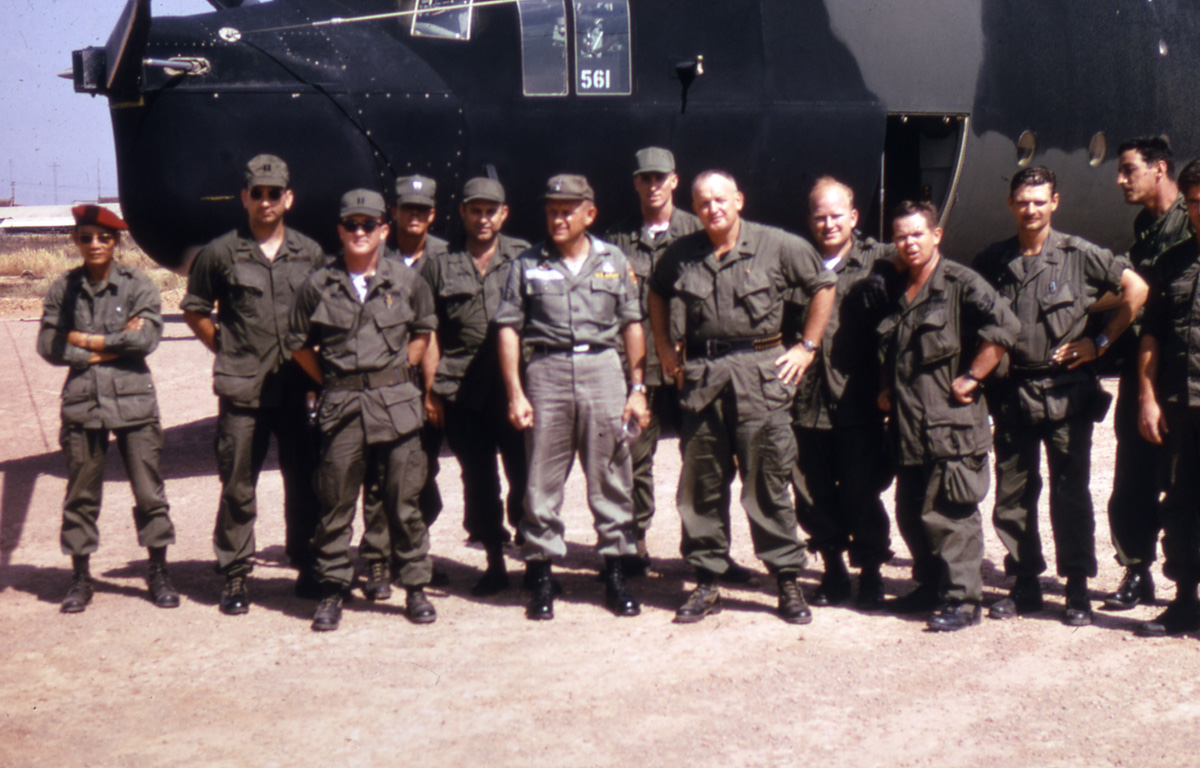
The first USAF C-130E(I) live Fulton SKYHOOK pickup in Southeast Asia. Col Singlaub, USA, was picked up by Det 1 314th TCW, crew SG-3 at Long Thanh, VN on 24 Feb 1967. The crew included Capt Bill Stripling (NAV), Capt B.D. Walker (EWO), Capt Harry Eastridge (NAV), TSgt Tom Nicholson (FE), COL John Singlaub, USA, MACVSOG CDR, Capt Russ Reaver (CP), Maj Ben Williams (AC, SSgt Tom Robertson (FE), MSgt Bob Dambach (LM, Capt Kermit Gustafson (CP), SSgt Walt Clinchoc (RO), A1C Johnny Slay (LM). Photo courtesy of Stray Goose International (SGI)
By John Stryker Meyer
Originally published in the April 2019 Sentinel
Photos courtesy of Stray Goose International (SGI)
One of the amazing scenes in John Wayne’s movie The Green Berets was an agent being whisked away to safety by a specially equipped C-130 fitted with the Fulton Recovery System, or simply Skyhook. The agent was fitted into a jump suit, with a thick nylon cord attached to it and tethered to a miniature blimp that rose to 500 hundred feet into the air. That C-130 flew under the blimp, the nylon cord suddenly lifted that agent off the ground and a specially trained Air Force crew inside the aircraft gradually winched that person inside the airplane.
By 1967, the earlier Skyhook program had been refined and replaced by the more sophisticated Fulton Recovery System. The Air Force had four C-130’s equipped with complex V-jaw snares mounted on the planes nose and winches on the aircrafts’ tailgates that would grip the line and pull the dangling person into the waiting arms of Air Force crew members inside the aircraft.
In early 1967, SFA Chapter 78 member MG (R) John K. Singlaub was the officer in charge of the highly classified, secret war run under the aegis of the Military Assistance Command Vietnam Studies and Observations Group or simply SOG, and he had a problem with the Air Force implementing the Fulton Recovery System in a fully operational program. “The Air Force squadron commander in charge seemed to me to be dragging his feet,” Singlaub told The Sentinel, during a March 1 interview at his home in Tennessee. “You know how too many career officers are, even back then, were reluctant because they appeared to me to be afraid someone might be hurt or they might lose one of their valuable aircraft.”
Singlaub, then a colonel, said he had a “little chat” with that colonel because “we were running more missions, there were downed pilots and this gave us an option to extract key agents, downed pilots and, perhaps small recon teams. We had to explore its capabilities in actual missions. I reminded that colonel that we were fighting a war against a tenacious enemy and we had to explore any possible way to recover key agents or SOG members from behind enemy lines, pure and simple.”
Then he told the Air Force colonel to be ready to check out the Fulton Recovery System with a live pick up. Singlaub asked the Air Force colonel if he’d like to be the first to be picked up. The colonel said no thanks. “Then I told him, that’s ok, because I’ll be the first person to be picked up live. I wouldn’t ask any men under my command to do something dangerous that I myself wasn’t willing to do first…needless to say, on that day at the end of February (1967) there were many nervous Air Force officers and NCOs on the runway at Bear Cat.”
First, the Air Force dropped the Fulton rig kit, including his insulated coveralls, two tanks of helium to inflate the miniature white blimp and the thick, 500-foot nylon cord that was attached to Singlaub on one end and the blimp on the other. As the blimp rose into the air, Singlaub set on the ground, waiting for the C-130 to arrive. “The C-130 approached low and down wind. Its engines were cut back and I could hear a simple whistling sound as it slammed into the line….much to my surprise the lift off was much gentler than I had imagined, due to the stretching of the nylon cord, it had some give way to it. In a matter of seconds, or less, I was flying backwards. It was hot and then I realized I had another problem. The pilot was flying over the combat zone instead of turning and flying out over the South China Sea. I said to myself, ‘Where is this guy going? He’s flying over enemy territory!”
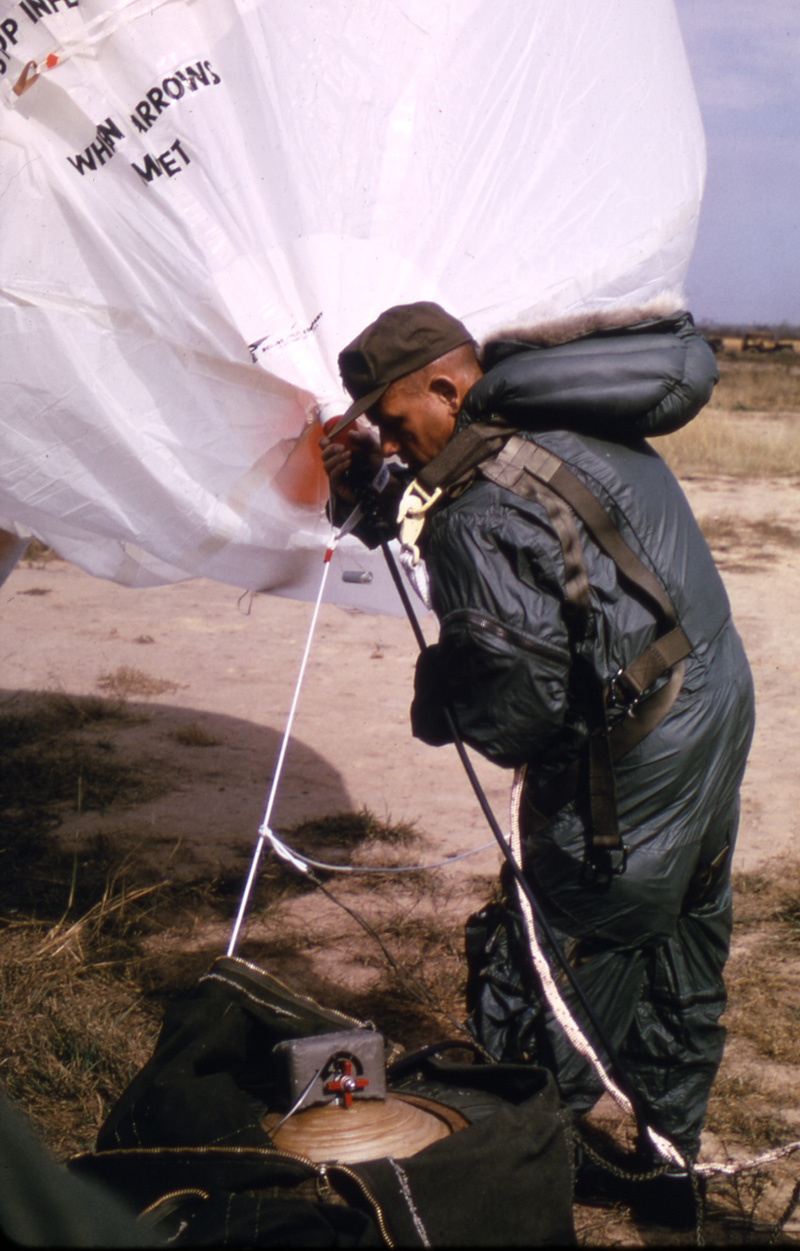
MG Singlaub inflating the balloon.
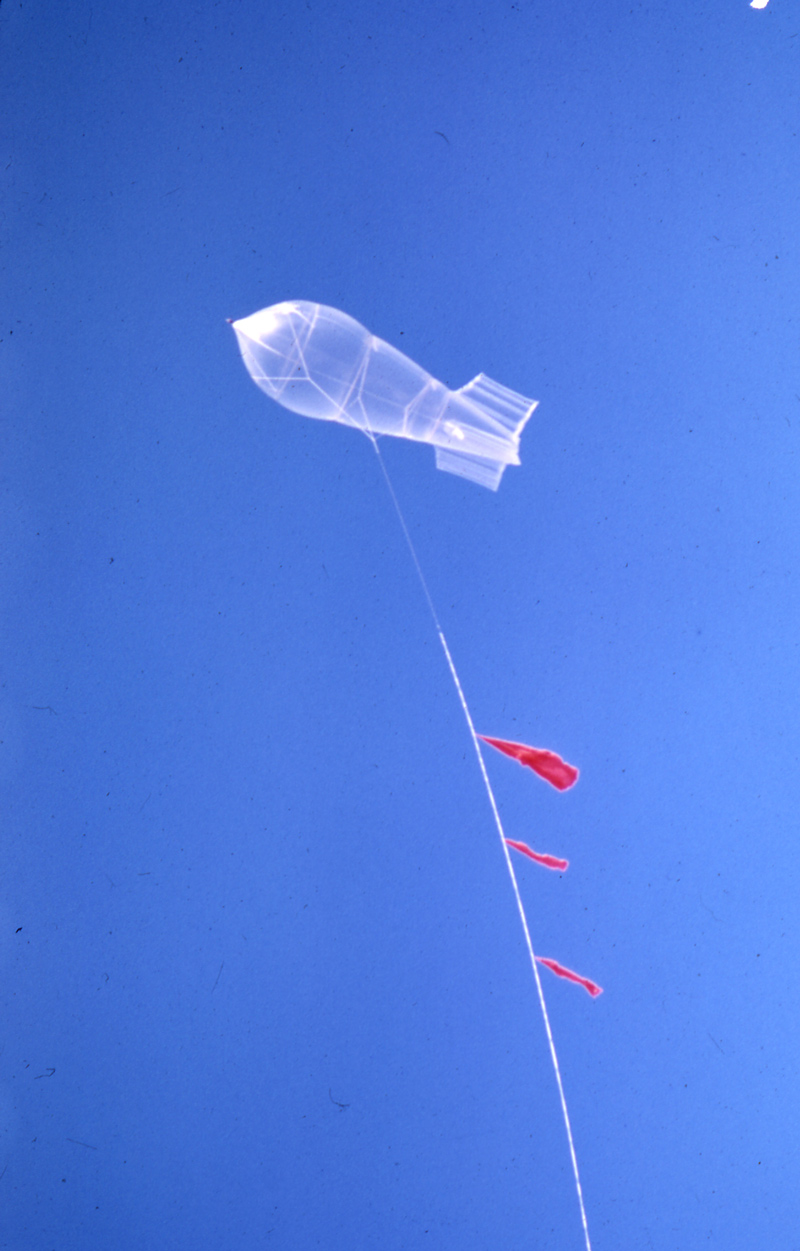
The balloon with aircraft guide flag markers.
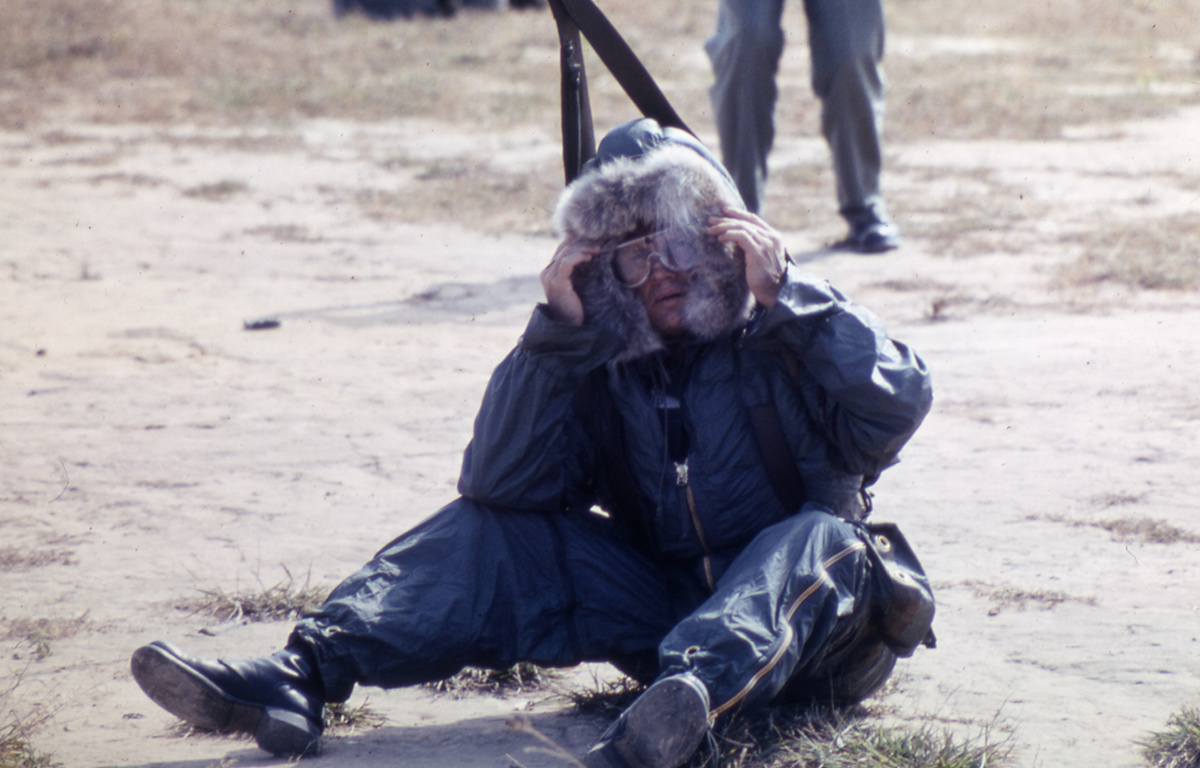
MG Singlaub ready for pickup
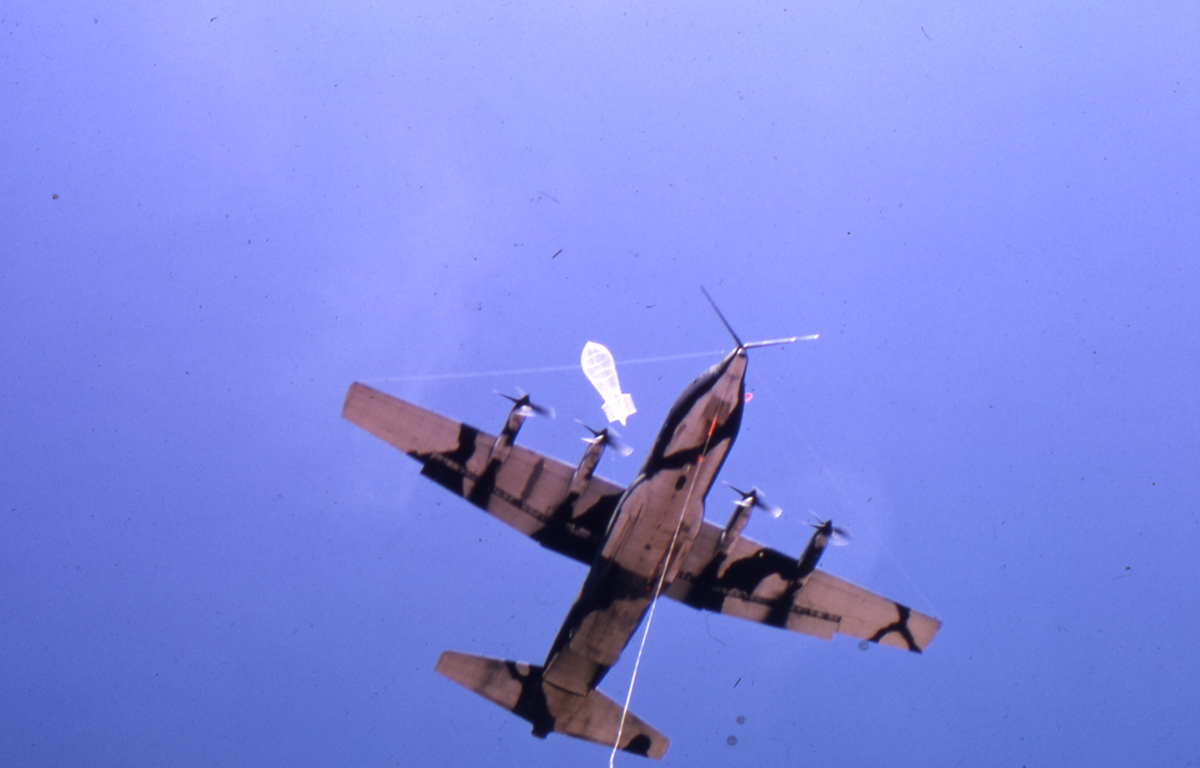
Balloon engaged by C-130.
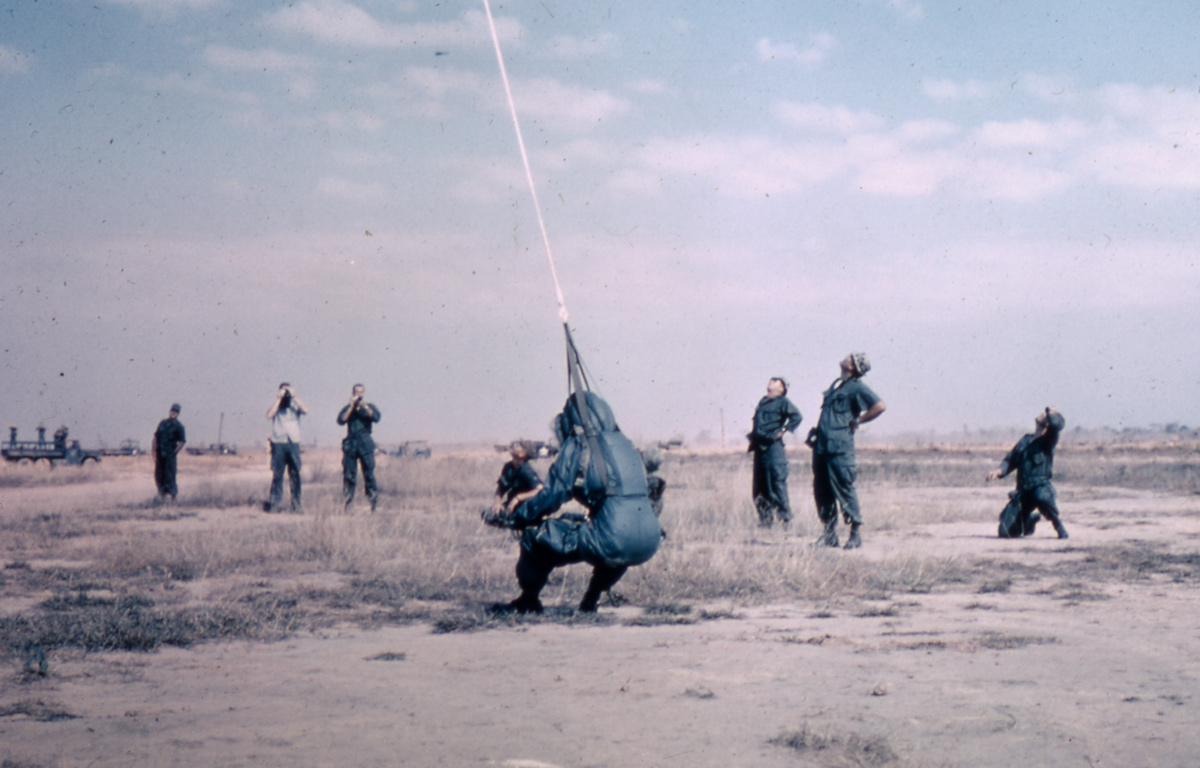
MG Singlaub at lift off
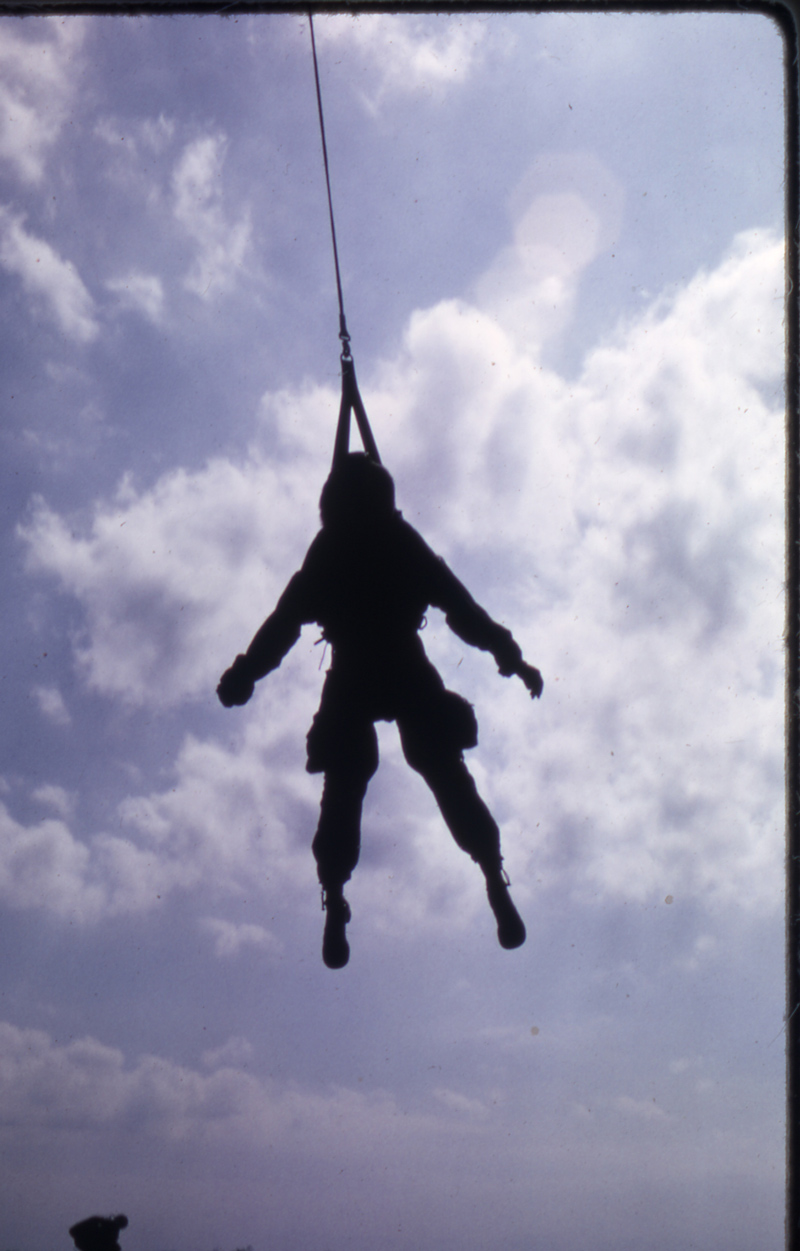
In the air!
The pilot flew northeast toward the Iron Triangle and War Zone D. Adding to Singlaub’s frustration and anger was the fact that the C-130 appeared not climb above 1000 feet, meaning he was a flying target for NVA/VC troops. A few days earlier, Singlaub had flown over the war zone with Maj. Gen. Bill Depuy, “and I vividly remembered seeing those green tracers from enemy weapons reaching up and hitting our chopper that day, and, as I was on my back, hanging behind the C-130, unable to turn over due to the wind, I imagined enemy soldiers firing at me! Of course, had the enemy known it was a colonel hanging behind the aircraft, I’m sure there would have been more gunfire.”
Singlaub said it felt as though he hung outside behind the aircraft “for what seemed like a long time,” before he felt the wind change and he finally observed the aircraft’s tail section. Shortly, he was pulled inside the reliable workhorse airplane. “I was real happy to be inside that airplane. Real happy….the important point here was, we proved it could work. I was real pleased it worked. Later, I went up there (over North Vietnam) and supervised one of the missions that picked up a pilot, or an agent. To be honest, I forget whom we picked up, but we did. I believe we successfully used this procedure to pick up a few pilots in North Vietnam. It gave us one more tool to use.”
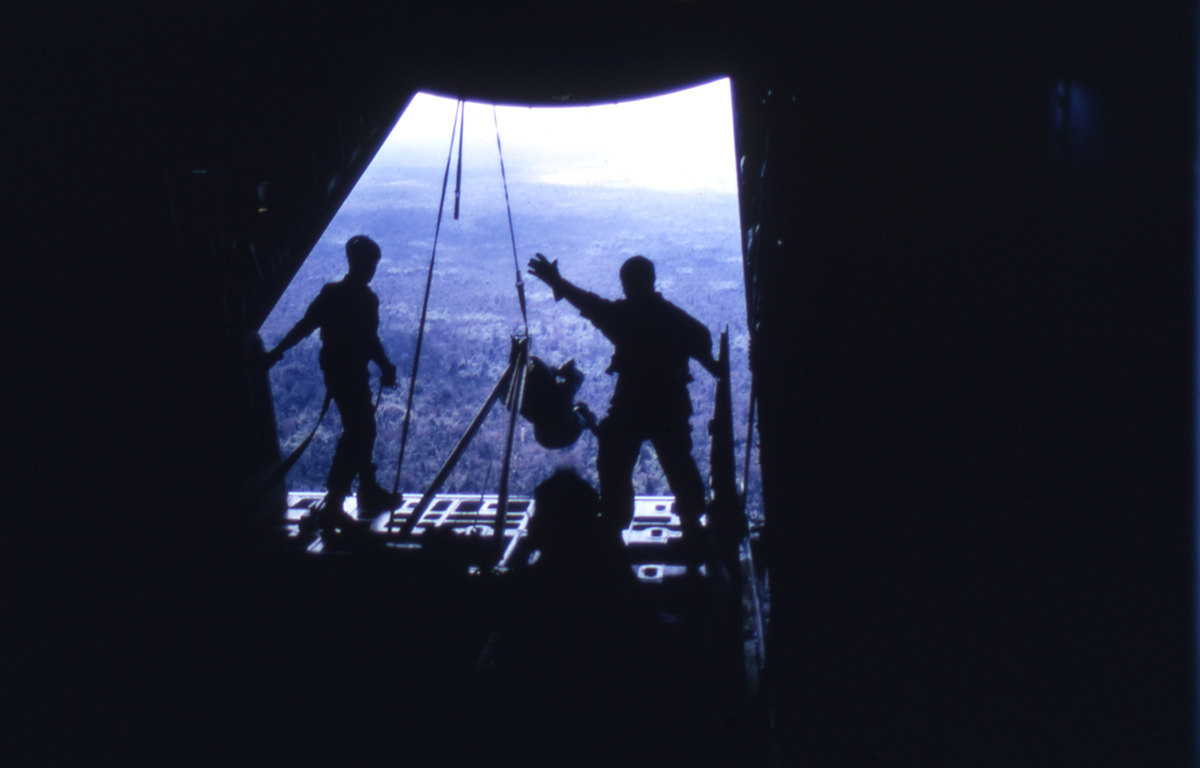
MG Singlaub being winched into the aircraft.
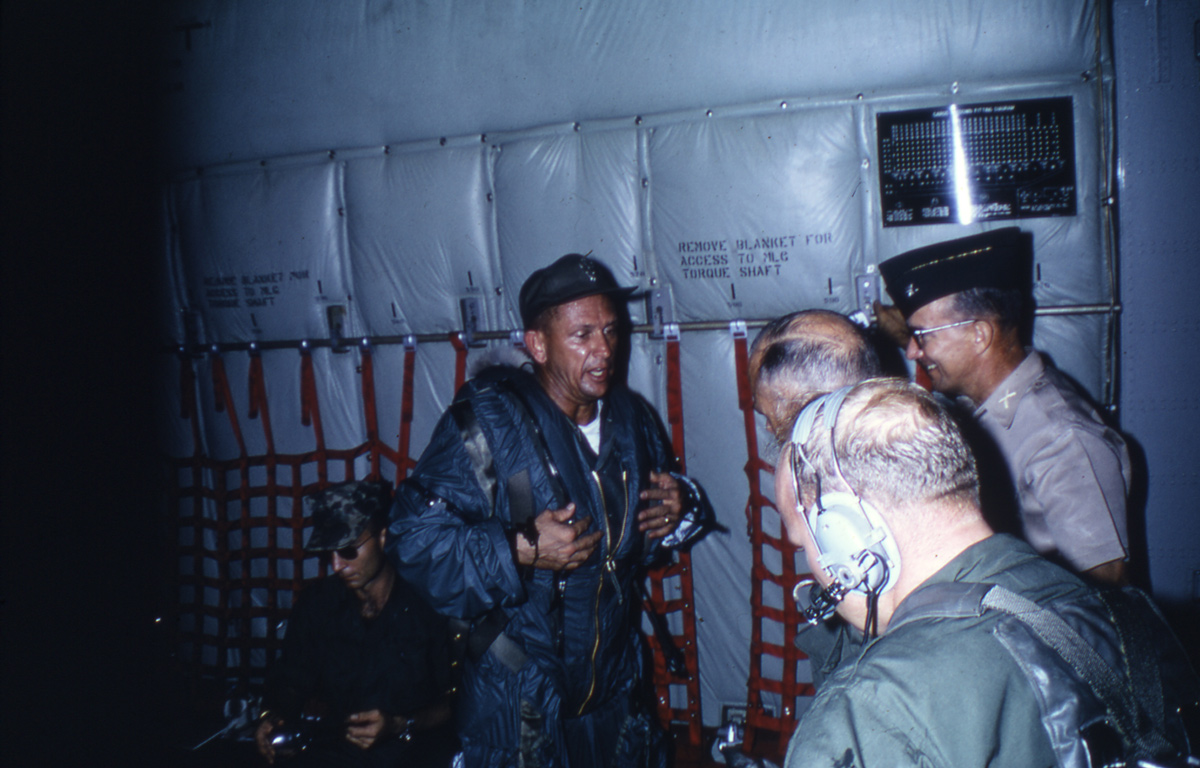
MG Singlaub recovered in aircraft.
In 1967, Singlaub was 54 years old. His official title in MACV-SOG was “Chief SOG”, the officer in charge of all SOG operations. He served on a Jedbergh Team in Europe and Asia during WWII, in spec ops during the Korean War and served two plus years as “Chief SOG” during the Vietnam War. Many years after the war during dinner with Gen. William Westmoreland, “Westy” reminisced about several missions and daring deeds that Singlaub ran during his military career, which began before WWII.
Under urging from his wife Joan, Singlaub admitted that Westmoreland called Singlaub his “young whipper-snapper.” Singlaub added, “Westy told me, ‘I’d think of the hardest mission I had and I’d give it to him and some way, one way or the other, he’d get it done.’ ”
Just like Singlaub did in late February 1967, hanging from the back of a C-130 over enemy territory.
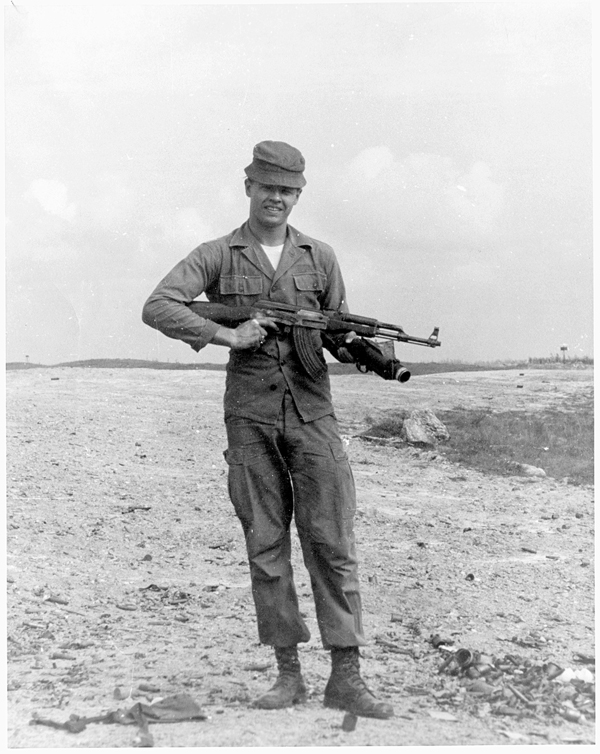
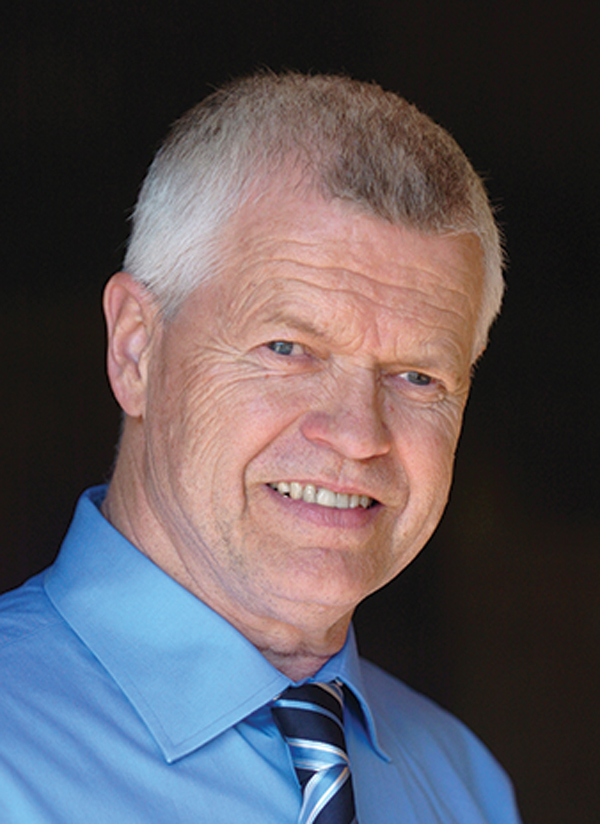
ABOUT THE AUTHOR — John Stryker Meyer entered the Army Dec. 1, 1966. He completed basic training at Ft. Dix, New Jersey, advanced infantry training at Ft. Gordon, Georgia, jump school at Ft. Benning, Georgia, and graduated from the Special Forces Qualification Course in Dec. 1967.
He arrived at FOB 1 Phu Bai in May 1968, where he joined Spike Team Idaho, which transferred to Command & Control North, CCN in Da Nang, January 1969. He remained on ST Idaho to the end of his tour of duty in late April, returned to the U.S. and was assigned to E Company in the 10th Special Forces Group at Ft. Devens, Massachusetts, until October 1969, when he rejoined RT Idaho at CCN. That tour of duty ended suddenly in April 1970.
He returned to the states, completed his college education at Trenton State College, where he was editor of The Signal school newspaper for two years. In 2021 Meyer and his wife of 26 years, Anna, moved to Tennessee, where he is working on his fourth book on the secret war, continuing to do SOG podcasts working with battle-hardened combat veteran Navy SEAL and master podcaster Jocko Willink.
Visit John’s excellent website sogchronicles.com. His website contains information about all of his books. You can also find all of his SOGCast podcasts and other podcast interviews. In addition, the website includes in stories of MACV-SOG Medal of Honor recipients, MIAs and a collection of videos.
Leave A Comment